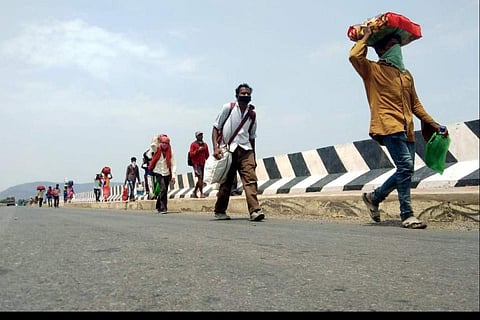

The sheer scale of joblessness that prevails in our country is the most defining impact of the pandemic induced lockdown. ActionAid Association's first round of the National Survey of Informal Workers conducted in May 2020, reveals that 78 per cent of the informal workforce had lost their livelihoods due to the lockdown, with 90 per cent urban unemployment and 72 per cent rural unemployment. As lockdown restrictions were lifted, many could resume their livelihoods but unemployment and underemployment remained high.
ActionAid's second round of survey covering 16,961 informal workers across 28 states and UTs, conducted during August and September 2020, revealed that 48 per cent of informal sector workers remained without a livelihood while 42 per cent were working far lesser hours per week as compared to pre-lockdown levels.
Rural unemployment stood at 53 per cent and urban unemployment was 36 per cent but underemployment rates were more than 39 per cent and 50 per cent in rural and urban areas respectively. The ActionAid studies also revealed that recovery was highly dependent on the sector and type of work with construction activities being the slowest to recover and agricultural activities the fastest.
There has also been a considerable shift from construction and regular manufacturing activities to agriculture and home-based production. Livelihood loss led to consumption loss and indebtedness. As per the ActionAid studies, only 63 per cent of the respondents had reported having at least two meals per day during April-May 2020. Although this increased to 81 per cent during August-September 2020, food sufficiency levels remained low even then. During April-May 2020, food insufficiency was 82 per cent among informal workers and 68 per cent during August-September 2020.
The continued lack of income and absence of dependable savings forced many informal workers to incur debt in order to meet basic household expenses. Thirty-nine per cent of them incurred debt during April-May 2020 while 57 per cent incurred debt during the period from June to August 2020.
The inability of formal debt sources like banks and co-operatives to cater to poorer households stands out. Informal networks like friends, relatives, neighbours catered to 62 per cent respondents and private money lenders catered to 31 per cent respondents. The major purpose of a loan was to meet expenses on food and healthcare.
ActionAid's second round of survey reported that access to public primary healthcare was dependent on a person's status of work with 90 per cent of employed respondents, 75 per cent underemployed respondents and 68 per cent unemployed respondents being able to access healthcare facilities when required. This is because although public primary healthcare is free, associated charges like transportation or medicine costs reduce the opportunity of people without proper income to access these necessary facilities.
Riding on the back of such distress, the second wave of COVID has hit informal workers even harder. With savings eroded, debts already incurred, workers have again lost jobs or partial jobs that they had regained in the early months of 2021 and have incurred greater expenses on health, eroding almost fully their slender capacities to cope. The full impact of the second wave on the lives of informal workers families will be clearer in the coming months through surveys conducted by Government and NGOs.
